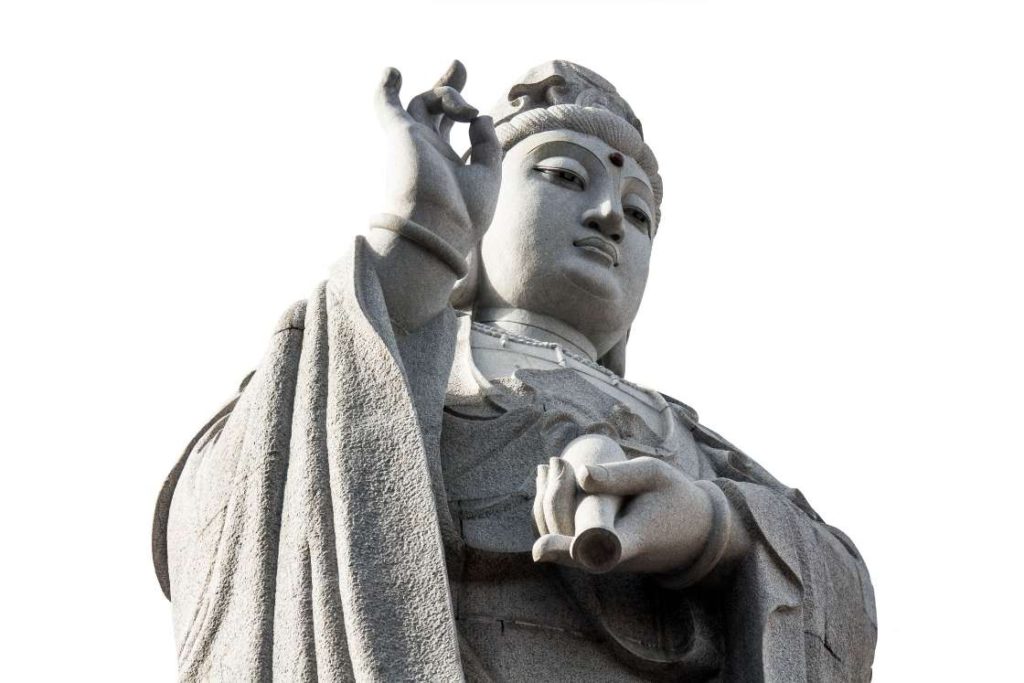
Practicing Ahimsa is not only a fundamental requirement to improve your yoga routine, but improve your everyday life in general. Ahimsa in its right form can be a force to bring immense change in the world.
In present times Ahimsa, or love, kindness and compassion toward oneself and others, is the key to both socio-political conflicts and environmental crises.
Embracing ahimsa is not only important to your yoga routine and health but is also the key to saving our deteriorating world from miseries and different kinds of human suffering.
Practice Ahimsa in Everyday Life
Ahimsa is not a concept in which you will find a shortcut. You cannot bring ahimsa to your asanas (physical postures) without practicing ahimsa in your regular life. Once you incorporate ahimsa in your daily life activities successfully, it will become a part of your being. And then when you hit the mat, ahimsa will come without even trying.
1. Mingle more with nature

You’ve got to interact with nature, especially in times like these, when the nature around us is constantly abused. To incorporate Ahimsa in your daily life, indulge in gardening, spend an evening under the shade of an age-old tree, go for a swim in the morning, go for a hike in the wilderness, or get a pet.
In this process, you will not only end up being more considerate towards nature but also awake a more conscious and aware self within you. The options to interact with nature are plenty, select one that is easily available to you. You need to realise the beauty of nature, get attached to it. Once that happens, you will automatically be considerate and compassionate towards it.
Ahimsa teaches you to be kind to the entire universe because you too are a part of it. So if you really are to show your love and kindness to the flora and fauna around you, you will have to first bond with it.
2. Focus on your food

Your food is either plant-based or animal-based. An unfortunate truth of life is that for you to live, another living being must die. You cannot alter it, but you can ensure that your diet motivates the most humane process available.
Choosing a vegan food diet is probably the best option available. Even for a plant-based diet try to select organic food products, the production of which causes minimum damage to our environment.
Even when choosing an animal-based diet, try to avoid gluttony, and limit your consumption to the minimum requirement. Glutinous meat consumption will attract private conglomerates, engaging in inhumane commercial slaughter.
Lastly, if you consume only your minimum requirement, you will make more food available for the less privileged. Even though indirectly, your conscious consumption will still be an act of kindness to a distant hungry soul.
In terms of your personal changes, a vegan diet will have a strong health benefit. A vegan diet enhances your metabolism, hormonal process, respiratory process, and cardiovascular process. Collectively these benefits not only keep you healthy but also in a very stable mood. A stable calm mood will promote a sense of ahimsa.
3. A little love for yourself
In the pursuit of caring for others, you must not starve yourself of caring. An individual fighting a battle in his head will lose the ones outside. Following the path of Ahimsa will put you up against a lot of challenges, to successfully overcome such challenges, you will need a level head.
Make it a practice to regularly confront your fears, inabilities, shortcomings, insecurities, and failures. Acknowledge and accept them but do not judge yourself too harshly; forgive what can be forgiven and forget what can be forgotten.
Practice harbouring happy and positive thoughts at all times. Do not entertain negative thoughts. A mind full of positive thoughts, is better equipped to handle internal conflicts.
4. Turn your passion into compassion

Your passion is your deep burning desire for something. And when you feel that burning desire to help someone in difficulty, it becomes compassion. And compassion is a must when practicing ahimsa.
You cannot care for others if you are just doing it out of obligation. You must feel like it’s the purpose of your existence; you need to have the burning desire.
There are two ways to awaken your sense of compassion. Firstly, you need to culture whatever passion you have. Every soul is passionate about something. Whatever is your passion, culture it thoroughly and immerse yourself in it. This increased sensation towards your passion will trigger your sense of compassion.
Secondly, you will have to practice listening; truly listening. We are always lost in our head, always revisiting the thoughts on our head, even when someone else is sharing their problem. So from now on just try and completely stop thinking when someone else speaks, and just listen.
This will increase your ability to pay attention to the grief of others and gradually start feeling for them as well. Almost all passionate people who are good listeners, end up being compassionate people.
Practice Ahimsa In Yoga, ON the Mat
Practicing ahimsa on the mat is a whole different approach, but equally challenging. Himsa (violence) on the mat is mostly indirect but always hinted towards your own self. In this, you hurt yourself more than others.
Sometimes when you hold your boat pose, you have a look at your belly fat and get demotivated; it’s also himsa. In another instance when you get frustrated by your inability to balance on one leg for the tree pose; it’s himsa. In short, every time a thought or a mental glitch agitates your peaceful mental state during your asanas, it’s himsa.
Ahimsa can be practiced through certain specific techniques on the mat. And once you have mastered them you will feel your sense and mood of non-violence synchronizing with the flow and rhythm of your asanas.
1. Steady your breathing

Have you ever heard someone being asked to breathe deep, in a stressful situation? Well, that’s simply because steady deep breathing, calms your nerves, eases your blood blow, and increases the level of oxygen in your body.
Steady deep breathing before each Asana, will make your muscles more supple, and prepare your mind to deal with the turmoils of the pose. Over time this practice will become an integral aspect of your personality. And in this way, you can incorporate Ahimsa while doing any yoga practice. Even off the mat, you will easily find yourself taking deep steady breaths and keeping yourself away from inflicting harm.
2. Commence and conclude with meditation
Meditation is already a separate limb of yoga. However practicing it before and after your yoga session, will help you train with ahimsa.
Meditation is when you turn into an ultimate observer of the universe, and all you do is absorb all that the universe has to offer, which is why Samadhi (the next stage of meditation) is often called absolute absorption.
While meditating, your mind will be flooded with thoughts. You will constantly struggle to put a stop to this flow of thoughts. With sufficient practice, you will eventually succeed. And when you do you will learn to put a stop to all types of thoughts, including the harmful ones.
For beginners, the best way to adapt this is to find a point of focus. Some find it helpful to focus their gaze on a burning candle (called trataka kriya), while some find chanting Om more helpful.
An alternate technique focuses on being carried away by the stream of thoughts, rather than stopping it. After spending enough time jumping from one thought to another, the mind tires, and eventually the flow of thoughts stops.
As you develop a disciplined mind, harmful thoughts will seize to occur, and even when they do you will be well equipped to flush them out. Ahimsa is all you will know.
3. Focus on the flow of yoga
The hand and limb movements, the arches, the bends, the twists, and so on, are all physical movements of yoga. At a beginner level, these movements are just abruptly formed and practiced. However, they are meant to be in smooth and constant flow.
The flowing movement of the asanas are wondrously beneficial in calming your mind and cleansing it of all agitating thoughts. The breathing combined with the flow is just the perfect tool for ahimsa.
To understand this flow better, you can indulge in other eastern exercise practices like tai chi, that solely focuses on the movement part. You can also participate in different sports and dance routines, that too will help you develop the flow.
4. Remember Yoga is not a competition

What you must remember is that yoga is not a competition. You are on the mat to train, thus the practicing part is important; the success is not. Be patient with the final pose and let it come in time.
The majority of himsa in yoga is from the frustration of the inability to perform a pose. So let go of the stubbornness that pushes you to get the final pose at a single attempt.
Practicing infront of a mirror also helps with the frustration. As a beginner body awareness and visualisation is low. A full size mirror will help you see what your pose is looking like, and where are you going wrong. With a clear direction, insight and analysis of your practice, you will feel less frustrated.
The three keys of practicing ahimsa
Ahimsa is a very simple concept, yet most fail to practice it in real life. If you wish to practice ahimsa successfully there are three keys you need to address.
- The very first key is to realise the purpose of your life. And it cannot be something as superficial as a Eurotrip or a billion-dollar balance. Dig deeper and get in touch with your inner realisations and emotions to figure out your true purpose. You will need a strong motivation to keep you on the path of ahimsa.
- Ahimsa is a path full of struggle and difficulties. At every stop, you will feel like quitting. But, you will need the necessary willpower and determination to continue your course. And that is your second key.
- The third key is to go a little easy on your ego. How you look, what people think of you, and such other worries cannot hold you back. Your target should be ahimsa and everything in the way is to be considered a distraction.




